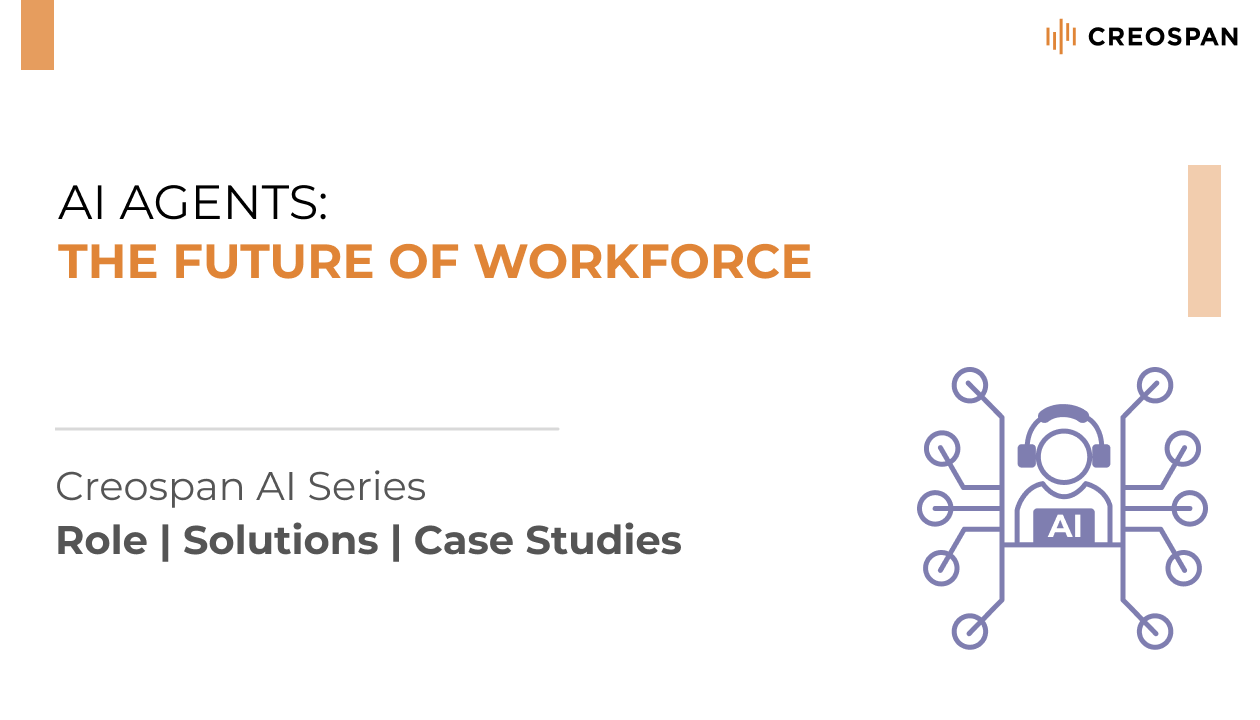I am sure you can relate to preparing sheets of information about the number of employees in your team, and how the budget is allocated through projects/tasks in your current or previous roles. It is not far you will have to add another dimension to it, how many of them are human and how many are non-human (AI Agents).
AI agents leverage large language models like GPT etc. to understand goals, generate tasks, and go on completing them. We can deploy them to automate work and outsource complex cognitive tasks, creating a team of robotic coworkers.
This field is evolving faster than ever, especially on the software side, with new AI models and agent frameworks increasingly becoming better and more reliable. Even the no-code platforms are more powerful than couple of months back, so this is a right time to get your feet wet and run some experiments.
What are AI agents?
An AI agent can in itself act autonomously in an environment. Can take information from its surroundings, make effective decisions based on that data, and act to transform those circumstances—physical, digital, or mixed. More advanced systems can self-learn and improvise their behavior over time, constantly trying out for new solutions to a problem until the goal is achieved.
Components of an AI agent system
AI agents have different components that make up their software, each with its unique capabilities.
Sensors let the agent sense its surroundings to gather percepts (inputs from the realistic world: images, sounds, radio frequencies, etc.). These sensors can be cameras, microphones, or antennae, among other things. For software agents, it can be a web crawl function or a tool to read files.
Actuators help the agent work in the realistic world. These can be wheels, robotic arms, or a tool to create files in a computer. – Yes, you are thinking of Telsa FSD.
Processors, control systems, and decision-making mechanisms compose the “brain” of the agent. They process information from the sensors, brainstorm the best course of action, and issue commands to the actuators.
Learning and knowledge base systems store data that help the AI agent complete tasks; for example, a database of facts or past percepts, difficulties faced, and solutions captured.
AI Agents for Developers
Code Generation: AI can help generate code snippets based on the developer’s requirements or even create entire skeletons for applications.
Code Review: AI agents can review code to identify potential bugs, optimize performance, and ensure best practices are followed.
Debugging: They can analyze code to find errors and suggest possible fixes, reducing the time spent on troubleshooting.
Documentation: Automatically generate documentation for code, making it easier for developers to maintain and understand over time.
Learning Resources: Provide personalized recommendations for learning new technologies or improving existing skills.
Project Management: Integrate with project management tools to track progress, manage tasks, and ensure timely delivery.
Testing: Assist in writing and running automated tests to ensure code quality and reliability.
Version Control: Help manage version control by automating merges, handling conflicts, and tracking changes.
Examples of AI Agents for Developers
GitHub Copilot: An AI pair programmer that offers code suggestions in real-time.
Tabnine: AI code completion tool that supports various programming languages.
DeepCode: Analyzes code to identify errors and potential improvements.
Kite: Provides predictive code completions to speed up the coding process.
General-Purpose AI Agent Apps
Relevance AI: A no-code platform that allows you to build AI agents for business tasks like data processing and API calls.
Zapier: Connects your favorite apps and automates repetitive tasks with ease, offering over 6,000 app integrations.
Microsoft Power Automate: Enables you to automate workflows by connecting your apps and services.
Otter.ai: An AI-powered transcription service that can capture and share meeting notes with ease1.
Copilot X: Leverages GPT models to autonomously complete tasks by breaking them down into subtasks.
What’s In the News?
For the first time in your life, you would to be working with a CEO AI Agent, a Manager AI Agent, a Peer AI Agent.
Take this example: Think of Siri/Alexa asking you for an update and reminding you of pending tasks.
There is a real possibility that this time you might end up reporting to a non-human manager.
Recent news: “Salesforce CEO Marc Benioff said at the World Economic Forum in Davos that today’s cohort of CEOs will be the last to lead all-human workforces. The AI agents are here—and they’re taking over more work at the office.”
Source: https://fortune.com/2025/01/24/marc-benioff-salesforce-human-workforces-ai-agents/
Will AI Agents Take Our Jobs?
I cannot think of ending this article without this question answered. This technology will absolutely displace jobs and bring substantial change to the market in a very near future. Human workers may be replaced by AI agents in multiple industries. And also, more positions for AI development and maintenance would be created, along with human-in-the-loop positions, to ensure human decisions drive AI actions and not the other way around. That’s going to be game forward.
Article Written by Krishnam Raju Bhupathiraju.

